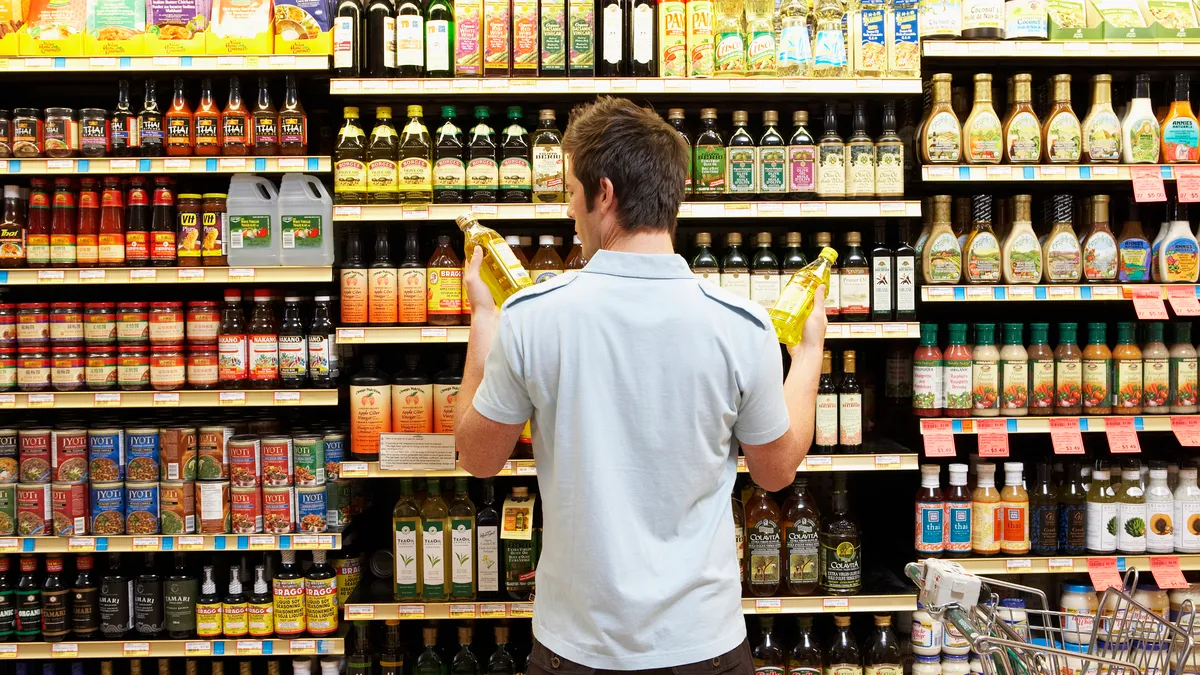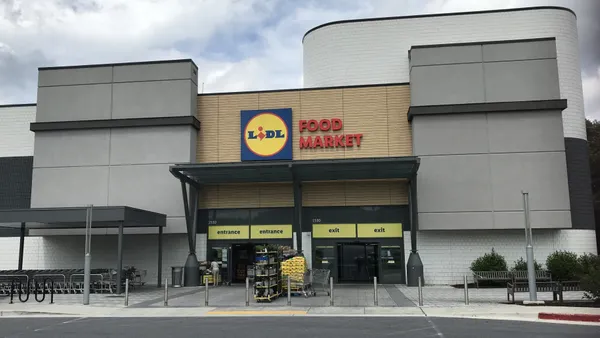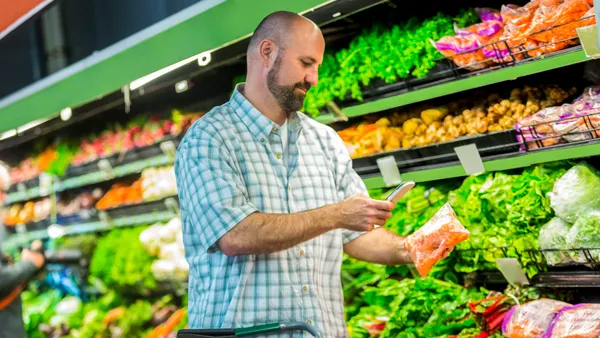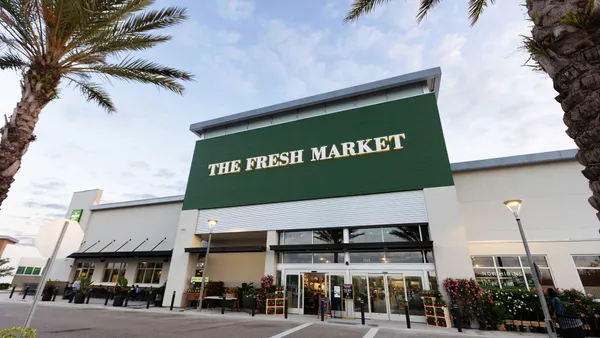Dive Brief:
- Food-at-home prices rose 7.4% over the past year, according to Consumer Price Index (CPI) data for January released by the U.S. Bureau of Labor Statistics (BLS) on Thursday.
- The CPI for food-at-home rose 1% in January compared to the prior month, a sharp increase over the 0.4% increase in December.
- The annual CPI on all items increased 7.5% in January on an unadjusted basis, marking the largest rate of inflation in 40 years, the BLS noted.
Dive Insight:
Prices rose at a higher clip than economists expected in January, according to numerous reports. Food prices increased at a particularly steep rate, which will only deepen the concerns many retailers have over their ability to keep people shopping in their stores.
Grocery prices in January rose across five of the six major categories measured by the BLS. Cereals and bakery products increased 1.8% during the month, while dairy and related products rose 1.1% and fruits and vegetables increased 0.9%. The only category that did not increase in January was the one that includes nonalcoholic beverages, which saw no change in pricing.
Meat, fish, poultry and egg prices rose 0.3% in January but continue to lead annual increases among major categories, with prices up 12.2%, according to the latest figures. Pork prices rose 14.1%, chicken prices rose 10.3%, and fish and seafood rose 9.6% on an unadjusted basis, according to BLS data.
Many grocers are holding down prices on staple goods in an effort to keep their customers visiting regularly. But that strategy is becoming increasingly painful as the monthly CPI for milk, eggs and bread continues to rise. Egg prices are up 13.1% over the past year on an unadjusted basis, according to CPI data, while monthly prices rose 2%.
Grocery prices came in higher than the overall food index, which rose 0.9% in January, while food-away-from-home prices rose 0.7% for the month.
High grocery prices have been grabbing headlines lately as consumers’ grocery bills are rising. Compounding these frustrations are the supply chain disruptions that persist nearly two years into the pandemic as suppliers grapple with labor shortages, shipping snarls and other challenges.
These conditions are pushing many consumers to do more of their shopping at discount retailers. Conventional grocers are fighting back with special promotions and an increasing focus on their private label lines, though the longer prices remain elevated, the more consumers will trade down, experts say.
“Higher food inflation may benefit discount stores at the expense of full-price supermarkets in the medium term, lifting sales at Walmart, Aldi and other discount chains that cater primarily to value-conscious shoppers,” a report by Coresight Research released Thursday noted.















